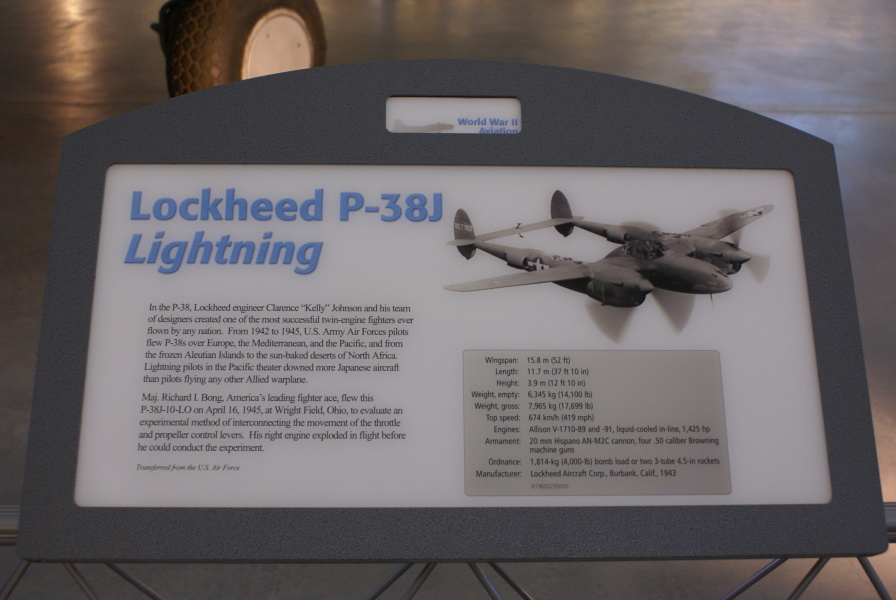| Prev |
heroicrelics.org Udvar-Hazy Center Site Index P-38 Lightning Gallery |
Next |
dsc76422.jpg
The sign accompanying the P-38. It reads
Lockheed P-38J Lightning
In the P-38, Lockheed engineer Clarence "Kelly" Johnson and his team of designers created one of the most successful twin-engine fighters ever flown by any nation. From 1942 to 1945, U.S. Army Air Forces pilots flew P-38s over Europe, the Mediterranean, and the Pacific, and from the frozen Aleutian Islands to the sun-baked deserts of North Africa. Lightning pilots in the Pacific theater downed more Japanese aircraft than pilots flying any other Allied warplane.
Maj. Richard I. Bong, America's leading fighting ace, flew this P-38J-10-LO on April 16, 1945, at Wright Field, Ohio, to evaluate an experimental method of interconnecting the movement of the throttle and propeller control levers. His right engine exploded in flight before he could conduct the experiment.
Transferred from the U.S. Air Force
Wingspan: 15.8 m (52 ft) Length: 11.7 m (37 ft 10 in) Height: 3.9 m (12 ft 10 in) Weight, empty: 6,345 kg (14,100 lb) Weight, gross: 7,965 kg (17,699 lb) Top speed: 674 km/h (419 mph) Engines: Allison V-1710-89 and 91, liquid-cooled in-line, 1,425 hp Armament: 20 mm Hispano AN-M2C cannon, four .50 caliber Browning machine guns Ordnance: 1,814-kg (4,000-lb) bomb load or two 3-tube 4.5-in rockets Manufacturer: Lockheed Aircraft Corp, Burbank, Calif., 1943 A19600295000

| Time picture taken | Sun Jun 19 11:05:56 2011 |
| Location picture taken |
Ground Level Boeing Aviation Hangar Udvar Hazy Center Chantilly, VA |
| Prev |
heroicrelics.org Udvar-Hazy Center Site Index P-38 Lightning Gallery |
Next |